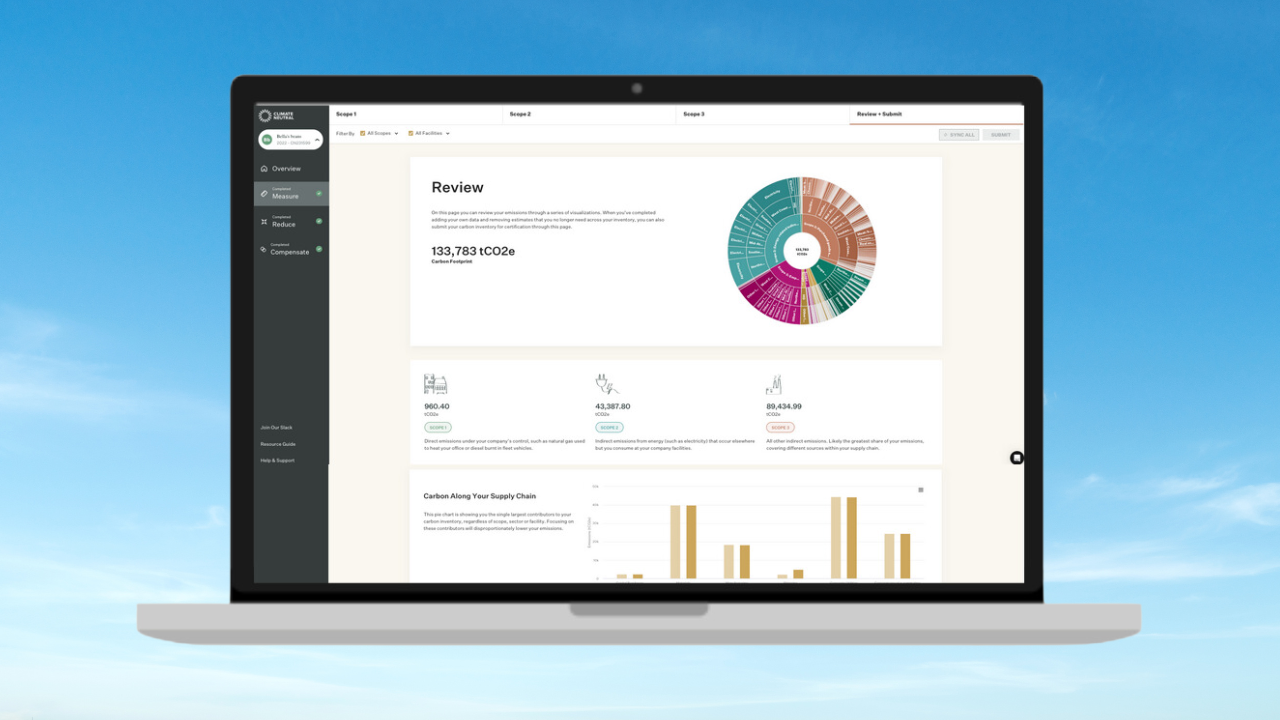How Emissions Data Can Drive Climate Action in Your Company
Corporate climate action is essential for future-proofing organizations. To meet the United Nations Sustainable Development Goals (SDGs) and achieve climate targets, companies must estimate baseline greenhouse gas (GHG) emissions. This helps secure buy-in from decision-makers and identify impactful reduction strategies, driving significant emission reductions.
In our recent webinar with Change Climate Project, an independent nonprofit dedicated to eliminating greenhouse gas emissions, Julia Akker, Associate Director at OnePointFive, and Sarah Shoemaker, Program Manager at Change Climate Project, shared a comprehensive guide on estimating baseline GHG emissions and using this data for corporate buy-in.
How We Should Use GHG Accounting
GHG accounting is often perceived as solely a compliance exercise, but it's a vital process for any organization aiming to reduce its environmental impact and contribute to global climate goals. It allows companies to:
Identify emission hotspots across the entire value chain
Prioritize high-impact emissions reduction actions
Set reduction targets based on baseline emissions
Invest in carbon projects to compensate for emissions that they are not able to reduce
Share results with stakeholders, including employees, customers, investors, and regulators
Getting a Baseline GHG Emissions Measurement with the BEE tool
The Business Emissions Evaluator (BEE Tool) is Change Climate Project’s leading not-for-profit carbon management platform that enables organizations to swiftly calculate their GHG emissions and identify major emission sources — by generating quick estimates by using high-level spending data, and refined GHG emissions analysis using detailed operational data.
The tool’s ease of use, combined with its affordability, makes it accessible to a wide range of organizations.
How does OnePointFive use the BEE Tool?
OnePointFive uses the BEE Tool in its consulting practice to help numerous companies — ranging from start-ups to mid-sized organizations in healthcare, services, and renewable energy sectors — cost-effectively calculate their emissions and identify reduction actions.
OnePointFive Academy also gives Fellows hands-on practice with GHG accounting by featuring the BEE Tool during a live lab session where Fellows work through a case study to generate Scope 1-3 GHG emissions results. Fellows receive complimentary access to the BEE Tool for three months—a benefit valued at $2,500 per year—through their tuition.
By participating in OnePointFive Academy, Fellows gain valuable hands-on experience with real-world consulting tools, preparing them to drive climate action within their organizations.
Creating a Carbon Reduction Action Plan
Setting a carbon reduction action plan involves identifying short-term actions that contribute to long-term organizational goals. Ideally, these plans should include SMART goals:
Specific: Clearly define the action to be taken
Measurable: Establish metrics for tracking progress
Actionable: Ensure the action can be implemented
Relevant: Align with the organization’s emission hotspots
Time-Based: Set deadlines for achieving the goal
For example, a specific goal like: “Transition 50% of C-suite’s business air travel in the Northeast US to train travel by Q1 2025” can make a significant impact when systematically implemented.
Case Studies
Case Study 1: Midsize Direct-to-Consumer Brand
A midsize direct-to-consumer brand aimed to measure the impact of its activities to inform its Net Zero strategy. By using GHG accounting, it discovered that 98% of emissions were in Scope 3, with major hotspots found in purchased goods and services, customer use, and transportation. Recommendations included increasing the use of domestic suppliers, educating customers on reducing the impact of product use, and incorporating renewable materials into product design.
Case Study 2: Renewable Energy Production Company
OPF supported a company with nine renewable energy production facilities, using the BEE Tool to calculate its Scope 1 and 2 emissions. Key recommendations included addressing operational inefficiencies in its highest-impact facility, standardizing data collection processes for future reporting cycles, and including material Scope 3 categories in future inventories.
Watch the full webinar video for more details on the case studies!
Conclusion
Unlocking corporate climate action requires a clear understanding of baseline GHG emissions and strategic planning for reduction initiatives. By leveraging platforms like the BEE Tool and following best practices, companies can make meaningful progress towards their climate goals, ensuring a sustainable future for both their business and the planet.
For more detailed guidance on GHG accounting and creating impactful reduction action plans, consider enrolling in OnePointFive Academy today!



